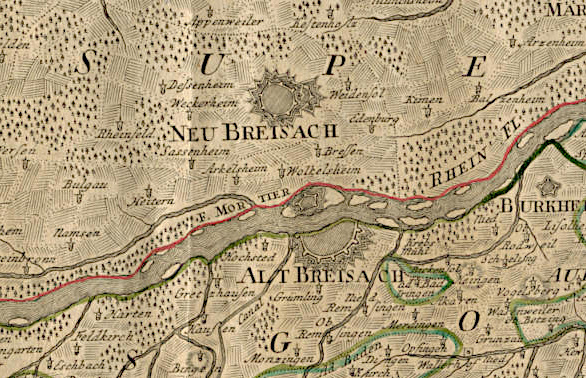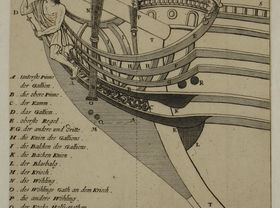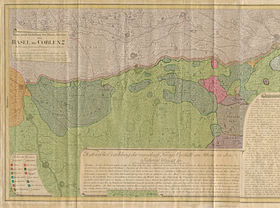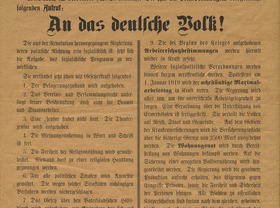
Fortress Neu-Breisach
The engraver of the map paid particular attention to the exact depiction of the city fortifications, for example with the opposite-facing fortresses of Alt-Breisach and Neu-Breisach. Alt Breisach was one of the most important fortress cities in Europe, and New-Breisach was a masterpiece of the famous French fortress architect Sébastian le Prestre de Vauban.
Alt-Breisach
Ever since Roman times, Breisach posessed one of the few stable bridges over the Rhine. Louis XIII therefore wanted to secure passage through the Alsace to Breisach. In 1639, the city fell to France. Louis XIV later commissioned Vauban to extend Breisach’s defences. A new part of the city arose, the new town “Ville Saint Louis”. But after the Rijswijk Peace Treaty of 1697, the town was stripped right down to its foundation walls. In 1700, the old Rhine bridge that had stood firm over the Rhine between Basel and Strasbourg since the 12th Century was destroyed. The French only gave the fortress to the empire in 1700 after Vauban had closed a gap in the fortifications belt with the building of Neu-Breisach. But already by 1703, French troops once again took the “key of the empire”, the fortress, with the help of the architect himself: Vauban directed the cannons, and in this way he was able to take his own fortress. Maria Theresia demobilised Breisach, and from 1741 cut out the fortifications. With the Ever since Roman times, Breisach posessed one of the few stable bridges over the Rhine. Louis XIII therefore wanted to secure passage through the Alsace to Breisach. In 1639, the city fell to France. Louis XIV later commissioned Vauban to extend Breisach’s defences. A new part of the city arose, the new town “Ville Saint Louis”. But after the Rijswijk Peace Treaty of 1697, the town was stripped right down to its foundation walls. In 1700, the old Rhine bridge that had stood firm over the Rhine between Basel and Strasbourg since the 12th Century was destroyed. The French only gave the fortress to the empire in 1700 after Vauban had closed a gap in the fortifications belt with the building of Neu-Breisach. But already by 1703, French troops once again took the “key of the empire”, the fortress, with the help of the architect himself: Vauban directed the almost complete devastation brought by the Revolutionary Wars, the erstwhile significance of the city came to end.
Neu-Breisach
The city was erected by Vauban at the beginning of the 18th Century. With Neu-Breisach, Vauban had perfected a fortifications system with bastions springing out of the wall. In order to protect the Rhine at Breisach, Vauban made three suggestions. Louis XIV chose the most expensive : an octagonal city planned from scratch. This is surrounded by a double-walled fortification wall – an outer offensive wall and a security wall consisting of eight towers and connecting walls. Every tower defended its two neighbouring towers. On the Rhine map, the city is also protected by a great Kronwerk to the north-east. Vauban never realised this vision. It was to be a buttress with one full bastion and two half bastions which together would form the outline of a crown. Pedetti nevertheless included it in his drawing, though the streets at right-angles were not specified. Fort Louis was another city that was entirely planned by Vauban. It was built on an island between Strasbourg and Karlsruhe to be both a garrison city and a camp. Landau was a further fortress by Vauban on the Rhine map. He also modernized the fortifications in Landskron, on the Swiss border, and in Strasbourg.





